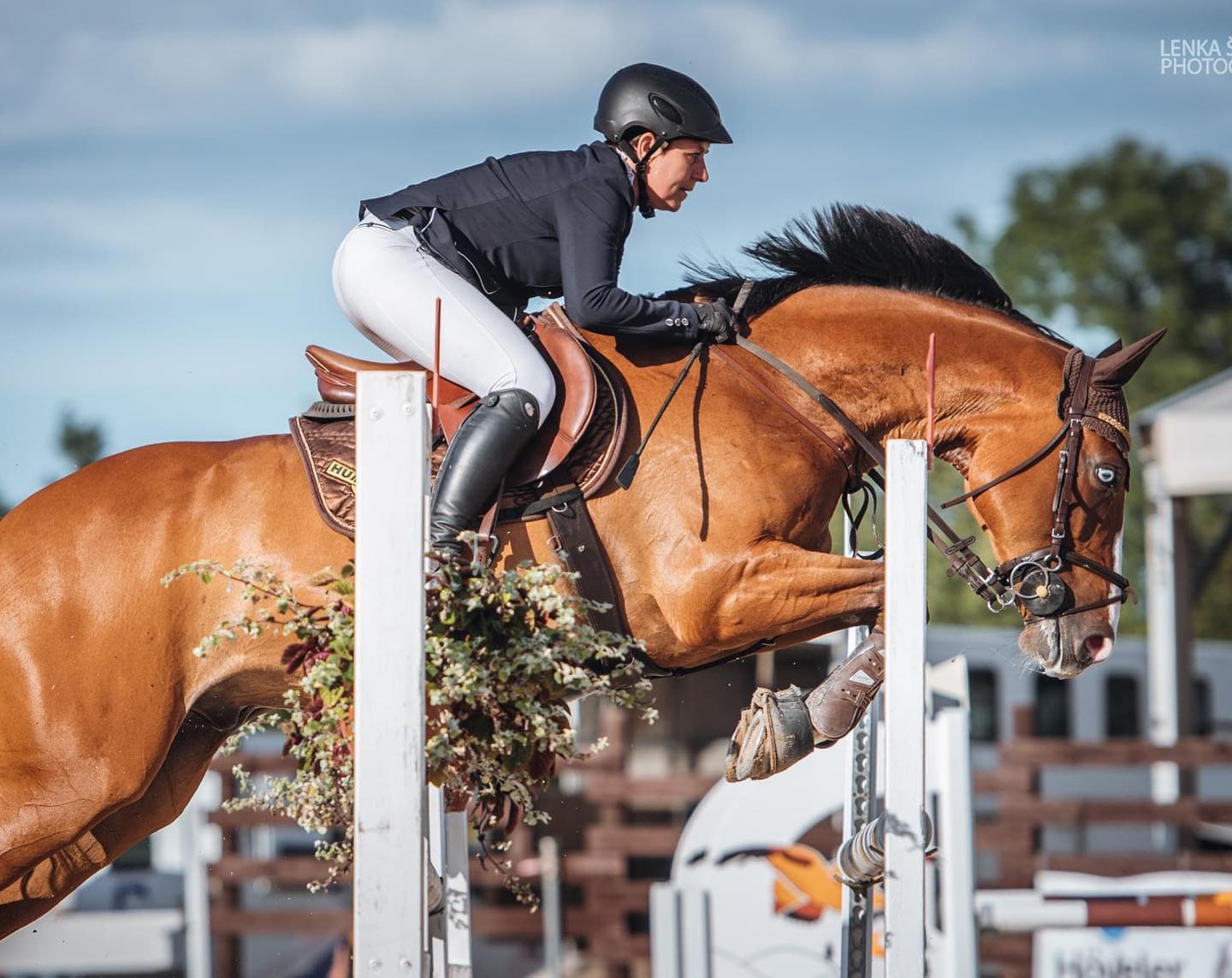Your horse is adorable and he looks like a blast!
I stumbled my way sideways into the jumpers when I returned to riding after getting my professional degrees. I very quickly realized I didn’t have enough money to get a competitive hunter so I (somewhat naively) decided to do the jumpers. It took a few years and lots of not-quite-stellar riding before I ended up with a trainer who put me on the right path, and I was lucky enough to get a horse who was born for the jumper ring.
The thing that has helped me the most is dressage. For the first year I rode with my new trainer he would say “DON’T TIP! STOP.TIPPING.” over and over because I was doing the hunter halfseat constantly. When I finally realized that sitting up meant feeling like I was going to tip over backwards, and then saw that in the ring mirrors I was actually NOT leaning backwards but simply sitting up straight for once, it was a revelation. In the years since then I’ve worked really, really hard to understand and be able to use my seat as an aid, to use my legs and hands more effectively, to engage my core, etc., and without dressage training it just wouldn’t be possible.
There are plenty of jumpers who go best with the rider in a lighter seat; mine goes best in a deep one, but I can two point all day long to the jumps now that I know how to use my seat and other aids to make sure he is balanced and working underneath himself before we get there. He likes to drop his back in front of the jumps and use his natural power to get over the fences because it’s just easier to be lazy and not use his back–but that only works up to a certain height. When we get to about 1.20m+ his job is so much physically harder for him if he isn’t using his back properly and balanced up. We covered this up for a bit by just galloping at all of the jumps (which is somewhat terrifying), and then relying on his natural cattiness to get him back for the turns and such. However, If I go into the turn with him very balanced and on his hind end I can set him up several strides out and then sit chilly and just let him go to the jump and whatever distance is there will work out because he is light in front and over his back.
Anyway, this has been a long process for me! I’m not the most naturally gifted rider (to put it mildly) so I’ve always had to work extra hard and learning how to do proper flatwork and then have it carry over to the jumps is something I’ll always struggle to do correctly. Without it, I’m just a passenger who is not helping and sometimes hindering my horse, so developing both of our skills and our partnership has been worth it! 
 )
)






